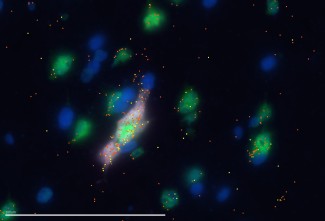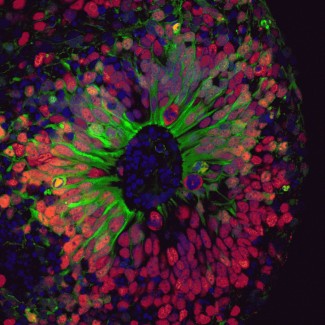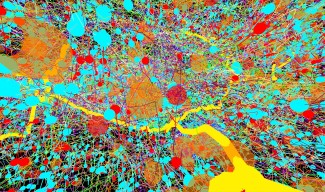A study by Stéphanie Baulac’s team has revealed somatic mutations in different cell types in patients with type 2 focal cortical dysplasia. This disease causes drug-resistant epileptic seizures, for which the main treatment option is currently surgery. Using single cell RNA sequencing on post-operative patient tissues, researchers have identified pathogenic mechanisms linked to the mitochondria and to cellular senescence specific to each cell type. This discovery paves the way for new, targeted therapeutic strategies, and offers hope for patients not eligible for surgery. The results have been published in the prestigious Nature Neuroscience journal.
A potential treatment for type 2 focal cortical dysplasia?
Type 2 focal cortical dysplasia (FCD2) is a brain malformation caused by somatic genetic mutations (present in only a few brain cells). The affected region, which can be located in different places in different people, is disorganized and has cytomegalic cells – cells that are abnormally large. Type 2 FCD leads to epilepsy that is resistant to medical treatments. It typically begins in childhood and requires surgery to remove the epileptogenic area. However, depending on the exact location of the brain area causing the seizures, surgery is not an option for some children.
Finding an effective treatment for these patients remains a huge challenge, for the children themselves and for their families. To try to find a solution, Stéphanie Baulac and Sara Baldassari have studied the post-operative tissues of patients with known mutations in their RHEB, mTOR or PIK3CA genes.
Using several techniques, including single cell RNA sequencing, the researchers have discovered that the mutations found in the affected region were present in several brain cell types, mainly glutamatergic neurons and astrocytes, but also GABAergic interneurons, oligodendrocytes and microglia. This suggests that these genetic anomalies appear very early in brain development, even before the neural stem cells differentiate.

Fewer than 10% of the mutated cells are cytomegalic, suggesting that they are just the tip of the iceberg. This suggests that other pathological mechanisms are present that are not detectable through histological approaches.
Identifying disease-causing mechanisms
This work identified the specific physiological mechanisms that cause the disease. Cytomegalic neurons are hyperexcitable and exhibit impaired mitochondria and cell senescence. These malfunctions could be the cause of epileptic seizures.
Thanks to these findings, new therapeutic approaches are emerging: targeting mitochondria and cell senescence could pave the way for innovative treatments for patients with FCD2.

The team "Genetic Mosaicism in Epilepsy and Neurodevelopmental Disorders" focuses on focal epilepsies and malformations of cortical development.
Read more





